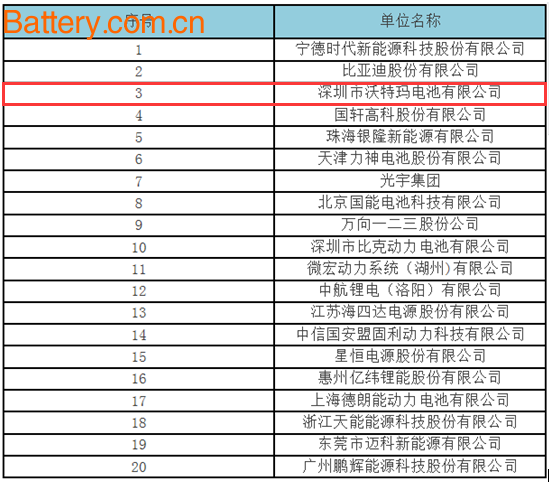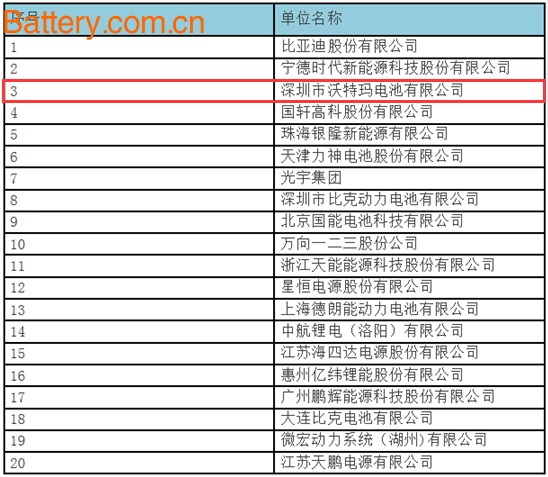Looking around the global situation, new energy vehicles have become a trend of development. The data shows that the total sales volume of new energy vehicles in China reached 507,000 in 2016, and according to optimistic expectations, the target of 800,000 vehicles is expected to be hit in 2017. The market prospect of new energy vehicles is very broad. Aiming at this slogan, traditional car companies are in full swing, and many Internet companies are not actively planning. We all know that the power battery is the core component of electric vehicles. It has long been blessed by the market and policy. The cruising range parameters that are the focus of consumers are also related. According to statistics, the output of domestic automotive power batteries in 2016 was 30.8GWh, an increase of 82% year-on-year. After the 2016 policy of frequent adjustment of industrial policies and entering 2017, what is the current status of new energy vehicles and power lithium battery industry? Under the fierce market competition, smoke can be rushed out of the crowd. Talking about the current situation of the industry New energy vehicle sales decline, power battery companies are under pressure According to the data released by the Federation on February 11, the sales volume of domestic new energy passenger vehicles in January 2017 was only 5,423 units, which was 87% from the previous month and 61% from the same period last year. January has always been considered a low season for car sales, but is this "cliff-style plunge" normal? Most experts in the industry believe that this is related to the new version of the subsidy policy that was introduced after the re-examination of the new energy vehicle promotion catalogue and the New Year's Day. The China National Vehicle Technical Service Center overturned the five batches of “Recommended Models for New Energy Vehicle Promotion and Application†released in 2016, which means that 2193 models need to be re-approved before they can be sold. Until January 23, 2017, the Ministry of Industry and Information Technology announced the first batch of new energy vehicle promotion catalogues after the catalogue was reaffirmed. The catalogue only included 185 new energy vehicles, and many “ice seal†models were in a state of paralysis. The new version of the subsidy policy that the industry has been eagerly awaiting was announced on December 30 last year. In 2017, the state subsidies fell by about 20%, and local subsidies were stipulated that they could not exceed half of the national subsidies. Many land-filling policies have not been updated in time. At this time, the purchase of cars can not enjoy the land, which affects the purchasing enthusiasm of consumers to a certain extent, which in turn reduces the overall sales of the domestic new energy vehicle market. There are reasons for this, industry experts believe that after the market has passed the adaptation period, the sales of new energy vehicles will return to normal. It is worth mentioning that the new version of the subsidy policy for the first time uses battery energy density as a reference indicator: the mass energy density of the pure electric passenger car power battery system is not less than 90Wh/kg, and the above is higher than 120Wh/kg. The subsidy is given twice; the energy density of the battery system of the non-fast charge type pure electric bus is higher than 85Wh/kg; the mass energy density of the special vehicle loading power battery system is not less than 90Wh/kg. This makes power battery companies need to strengthen the energy density of products while they are under the price reduction requirements of downstream vehicles. On the upstream side, the increase in the price of some of the battery raw materials has also increased the cost burden. The power battery companies in the middle reaches are attacked on both sides, and the profits are constantly being compressed. The previous "Automobile Power Battery Industry Standard Conditions" (2017) (draft for comment) will increase the threshold of lithium-ion power battery unit production capacity to 8GWh, and there are only a handful of power battery companies that can reach the standard in China. The expansion of production has been scraped throughout the industry. In 2017, the power battery capacity is expected to reach 170 GWh, which is more than 7 times the actual demand. However, high-end production capacity is still in short supply. The structural excess of this industry and the “Matthew effect†of the market have become more apparent. Undoubtedly, the country is pushing the industry to develop, and various policies are superimposed, and the future will achieve the effect of “shuffle†in the industry. So, what power battery companies can withstand this baptism? See the company ranking Who is the leader of the power battery market? Sales have always been the most intuitive to reflect the strength of a company. The China Chemical and Physical Power Industry Association conducted a statistical analysis of the production, sales volume and sales revenue of 44 domestic power lithium-ion battery companies in 2016, and announced the list of the top 20 enterprises in early February. It is not difficult to find that most of the top companies in the list are the first echelon companies in the domestic power battery industry, and Shenzhen Waterma Battery Co., Ltd. is among them. This is a company with a strong sense of innovation and long-term vision. In the 2016 China Power Lithium-Ion Battery Sales and Sales Top 20 companies, they all achieved the third place. Table 1, 2016 China Power Lithium Ion Battery Sales Revenue Top 20 Enterprises Table 2, 2016 China Top 20 Lithium Ion Battery Sales It is understood that Waterma was founded in 2002 and is headquartered in Shenzhen, Guangdong, and currently with domestic automakers such as FAW Group, Dongfeng Motor, Shanxi Grand Canal, Shanghai Shenlong, Xiamen Golden Brigade, China National Heavy Duty Truck HOW and Kowloon Motors. There is close cooperation. In 2016, Wattmar made great efforts to achieve leap-forward development. The annual sales of power batteries reached 2.53GWh, ranking third in the country and fourth in the world (more than the fifth-ranked LG Chem). In addition, Waterma has been put into production in Tongling, Shiyan, Jingzhou, Tangshan, Weinan and other production bases in Anhui. The industrial layout is grand, and the annual battery capacity at the end of 2016 has reached 12GWh, reflecting the strong market competitiveness and deep market of Waterma. Corporate strength. Behind the 2016 Waterma's proud transcript, it is full of clear market strategy, clear business model, good quality assurance and persistent technical breakthrough. In addition, Watmar has been insisting on the production of lithium iron phosphate batteries for a long time, and this time has also been affirmed, ranking third in the list of lithium iron phosphate power lithium batteries. Table 3, 2016 China Top 15 Lithium Iron Phosphate Power Lithium Ion Battery Sales Looking closely at these three lists, the power battery companies ranked in the front row are not working hard to deepen the industry. If there are more domestic companies such as Waterma, BYD and CATL that are far-sighted and innovative, will we be closer to the dream of “overtakingâ€? Those who hold the ear are like this. Hose Fittings,Seal Hose Fittings,Hose And Fittings,Gas Seal Hose Fitting Jiaxing Master Fitting CO.,LTD , https://www.master-fittings.com

